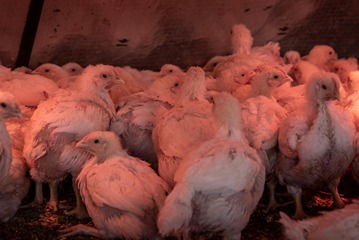Bird flu, or avian influenza, poses significant challenges for both animal and human health worldwide. Understanding these challenges is crucial in developing effective strategies to control and prevent its spread.
Surveillance: Monitoring Wild Birds and Poultry Farms
Bird flu primarily circulates among wild bird populations, making surveillance crucial for early detection. Poultry farms are also monitored closely due to their susceptibility to outbreaks.
Interesting Fact: Did you know? Wild migratory birds are natural carriers of bird flu viruses and can spread them across continents during their seasonal migrations.
Joke: Why did the chicken join a gym? To stay fit and avoid catching the flu!
Vaccine Development: Addressing the Complexity
Developing effective vaccines against bird flu strains remains challenging due to the virus’s ability to mutate rapidly.
Interesting Fact: Scientists are constantly researching new vaccine technologies to create broader protection against diverse bird flu strains.
Fun: What do you call a bird flu vaccine for a duck? Quackcine!
Global Cooperation: Essential for Containment
International collaboration is vital in sharing information and resources to respond swiftly to outbreaks.
Interesting Fact: The World Health Organization (WHO) and Food and Agriculture Organization (FAO) collaborate closely to monitor and control bird flu outbreaks globally.
Fun: Why did the duck get promoted? Because it was excellent at quack-tical operations!
Conclusion
Controlling bird flu requires a multi-faceted approach involving surveillance, vaccine development, and global cooperation. By staying informed and implementing proactive measures, we can mitigate the impact of this persistent threat to both animal and human health.
Similar Articles :
- Avian Influenza: What You Need to Know
- Bird Flu (Avian Influenza): Symptoms, Transmission, and Prevention
- Why Is Global Collaboration Crucial in Managing Bird Flu?
- How Did Bird Flu Become a Threat to Humans?
- What Are the Challenges in Controlling Bird Flu?
- How Does Bird Flu Affect Bird Populations?
Similar FAQs
What are the prevention and control measures for avian influenza in poultry?
Prevention and control of avian influenza in poultry involve strict biosecurity measures, surveillance, and in some cases, vaccination.
How is avian influenza treated in poultry?
Avian influenza in poultry is managed through supportive care, isolation of infected birds, and sometimes antiviral medications under veterinary supervision.
How can avian influenza be prevented?
Avian influenza can be prevented by implementing strict biosecurity measures on farms, practicing proper hygiene, and controlling movement of birds and people.
How is bird flu treated?
Bird flu in humans is treated with antiviral medications, supportive care, and sometimes hospitalization depending on the severity of symptoms and strain.
What are the symptoms of avian influenza in poultry?
Symptoms of avian influenza in poultry include respiratory distress, decreased egg production, swollen head and neck, and sudden death in some cases.
How can bird flu be prevented in birds?
Bird flu in birds can be prevented by maintaining strict biosecurity, monitoring for signs of illness, and avoiding contact with wild birds.
How is avian influenza diagnosed in poultry?
Avian influenza in poultry is diagnosed through laboratory testing of swabs or tissues from sick birds to detect the virus’s genetic material or antigens.

